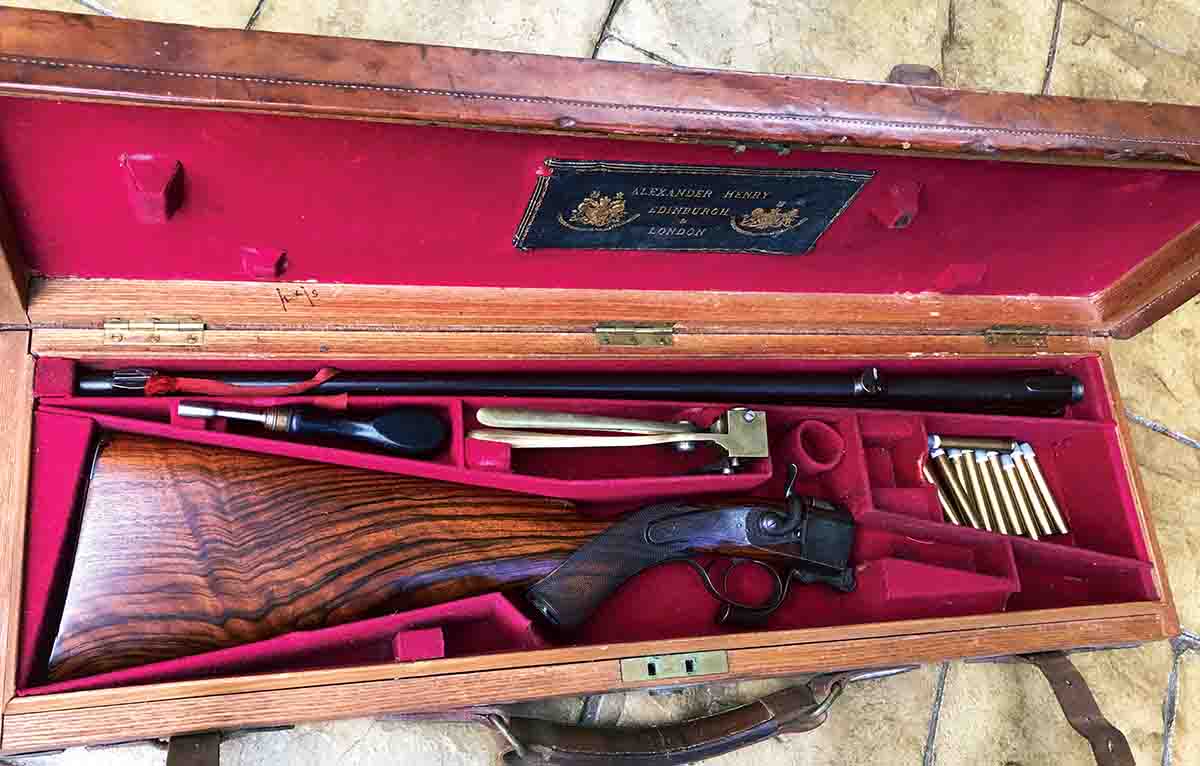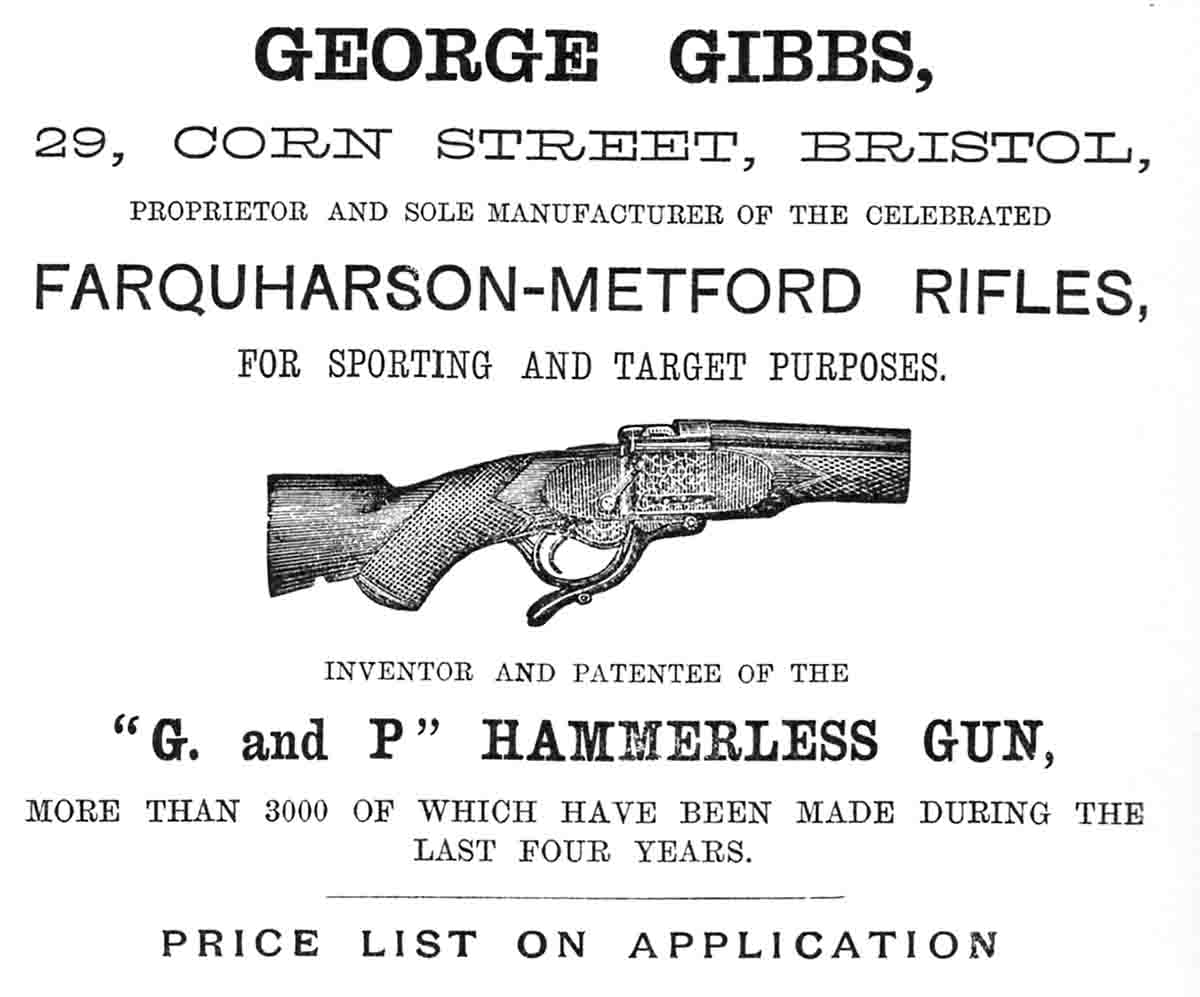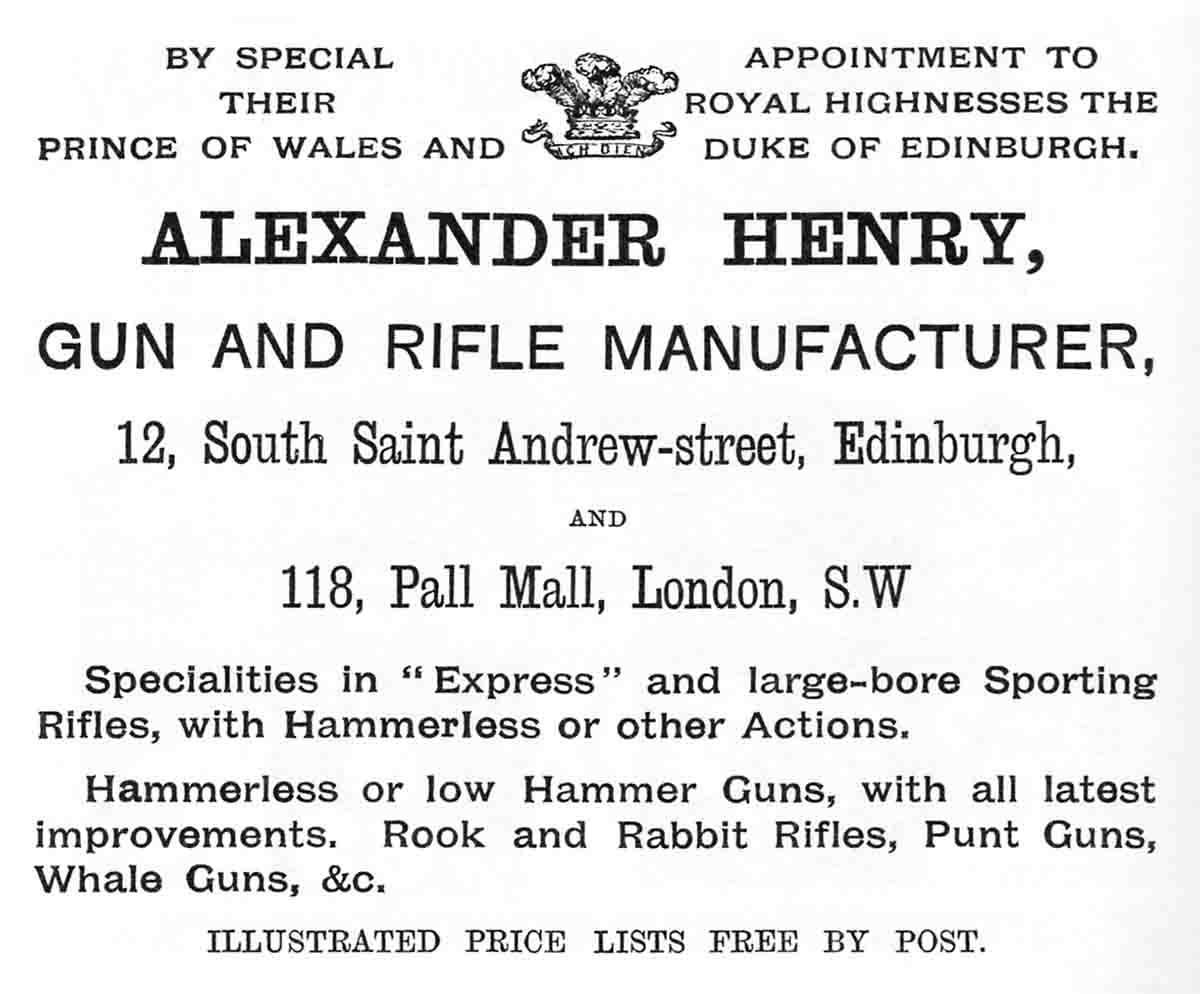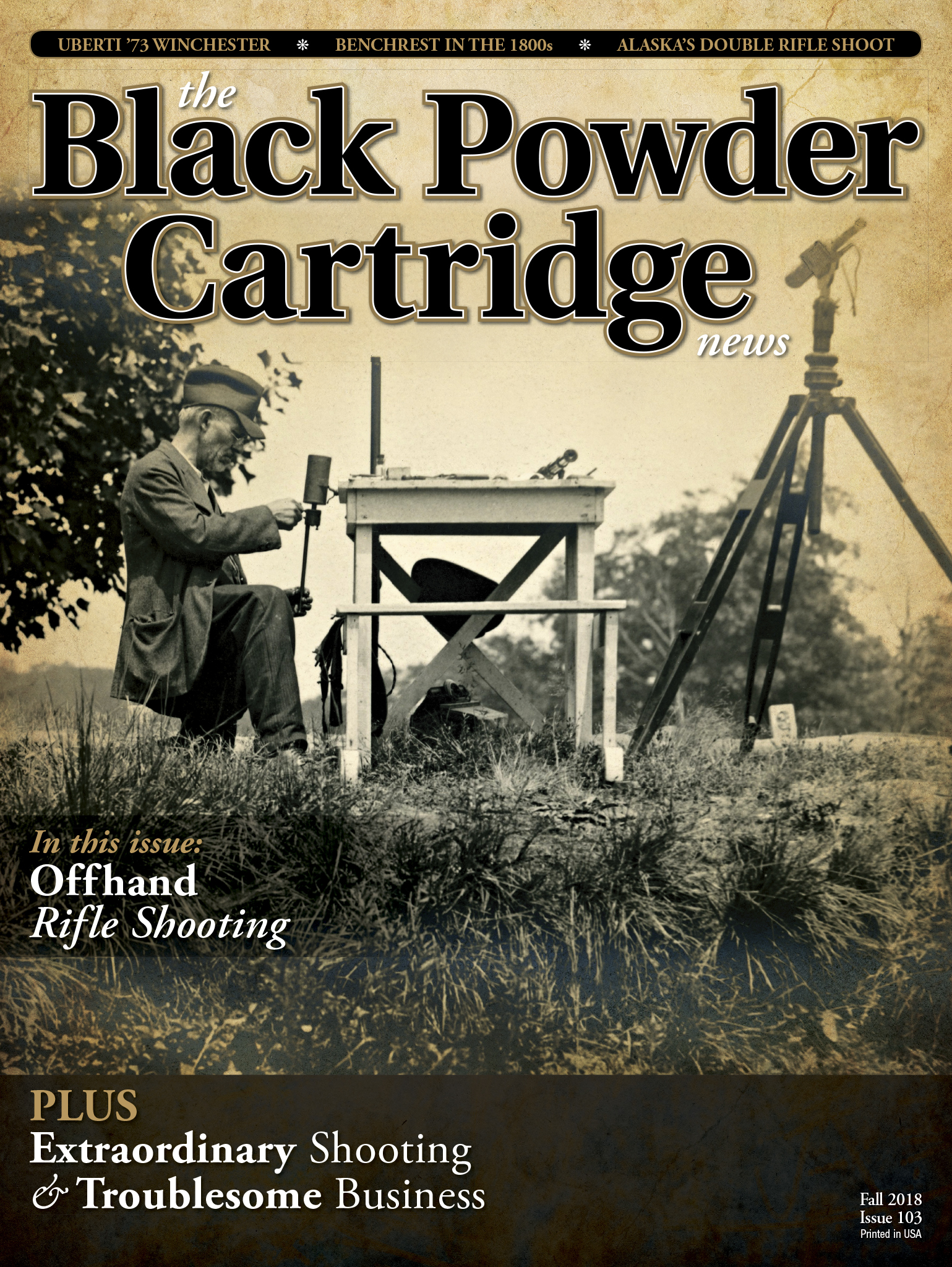At birthdays and anniversaries, we some-times look back over our relatives’ lives. I am Alexander Henry’s great-great grandson, and the 200th anniversary of his birth was June 6, 2018. I have always been fascinated by his life, as so little was known. In my collaboration with gunmaking historian Donald Dallas on his book Alexander Henry – Rifle Maker, I found out so much about family tragedies and business issues, as well as celebrating his inventiveness and successes.

A pair of Alexander Henry best quality, breech loading, single shot rifles. Although the left-handed No. 3664 rifle made in 1875 has a flat lock and octagonal barrel, the Henry records still describe it as “best quality.” Rifle No. 6070, made in 1886, is also defined as best quality, yet it has a cranked lock and a round barrel – typical of what is found on most larger-framed best quality Henry single shots. It is my belief that the only thing that differentiates Henry’s best quality is the choice of wood and the amount of engraving.
His father James died when Henry was 11 months old, and his mother Janet remarried to a blacksmith named John Scott a year later. John’s own son was listed as a “journeyman blacksmith,” and Henry as a “journeyman gunmaker” aged 22, in the same house in 1841. Presumably this is where Henry’s interest in working with metal came from.
When Alexander and his wife Isabella had their first son in 1848, they named him James after his late father. What is fairly well known and reported in newspapers of the time is that Henry tragically shot his twelve-year-old son dead in September of 1860, in an accident at Henry’s private shooting range off Easter Road in Edinburgh, very close to what is Hibernian F.C.’s stadium today.
It says something about the man that he continued in the business at all, let alone ever picked up a rifle again; the effect on the Henry family must have been devastating.
Henry must have known he was on the verge of something, because only six weeks after the accident, he registered his famous patent No. 2802 on November 15, 1860, for what became known as “Henry Rifling,” with which his successful business really started to take off. It seems therefore very likely that the first person killed by Henry Rifling was his own son James.
A week later, The Scotsman reported:
Extraordinary Rifle Shooting
A new rifle, the peculiar grooving of which has been patterned and patented by Mr Alexander Henry, gunmaker, S St Andrew Street, has within the last week been tried at ranges from 200 yards to a mile, and the results have been certainly equal, if not superior to those of any rifle we have heard of.
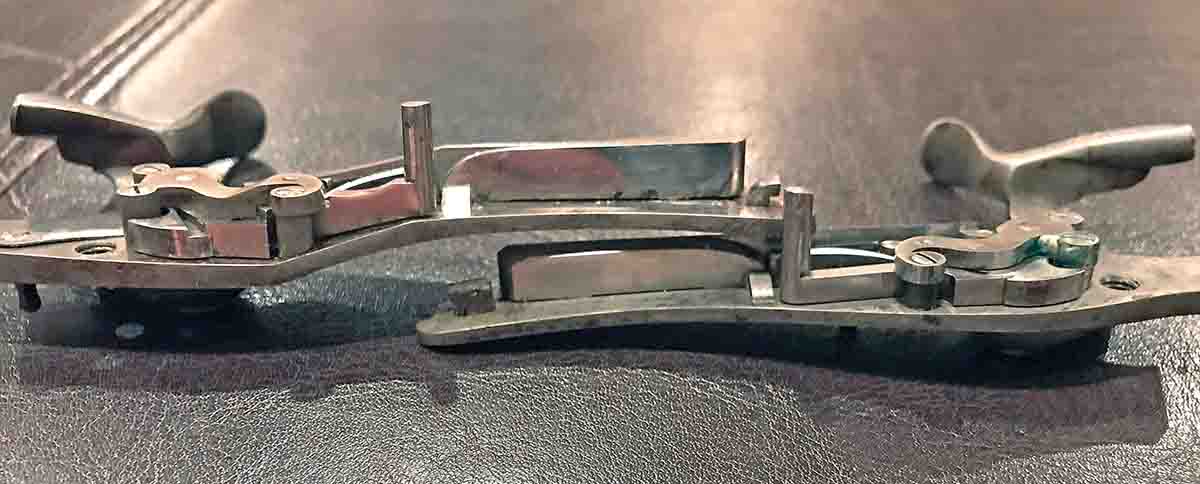
Henry “cranked” lock on left, standard flat lockplate on right.
It always rankled Henry that he had won both the Action and Barrel prizes in the War Department competition but only his barrel was adopted, becoming part of the Martini Henry rifle in the early 1870s.
Henry versus Farquharson
In 1872, his long-running patent dispute over improvements to breech-loading firearms with John Farquharson went to court. Astonishingly, the court found in favor of gamekeeper (later literally turned poacher) Farquharson, instead of Henry with 40 years of experience in the gun trade.
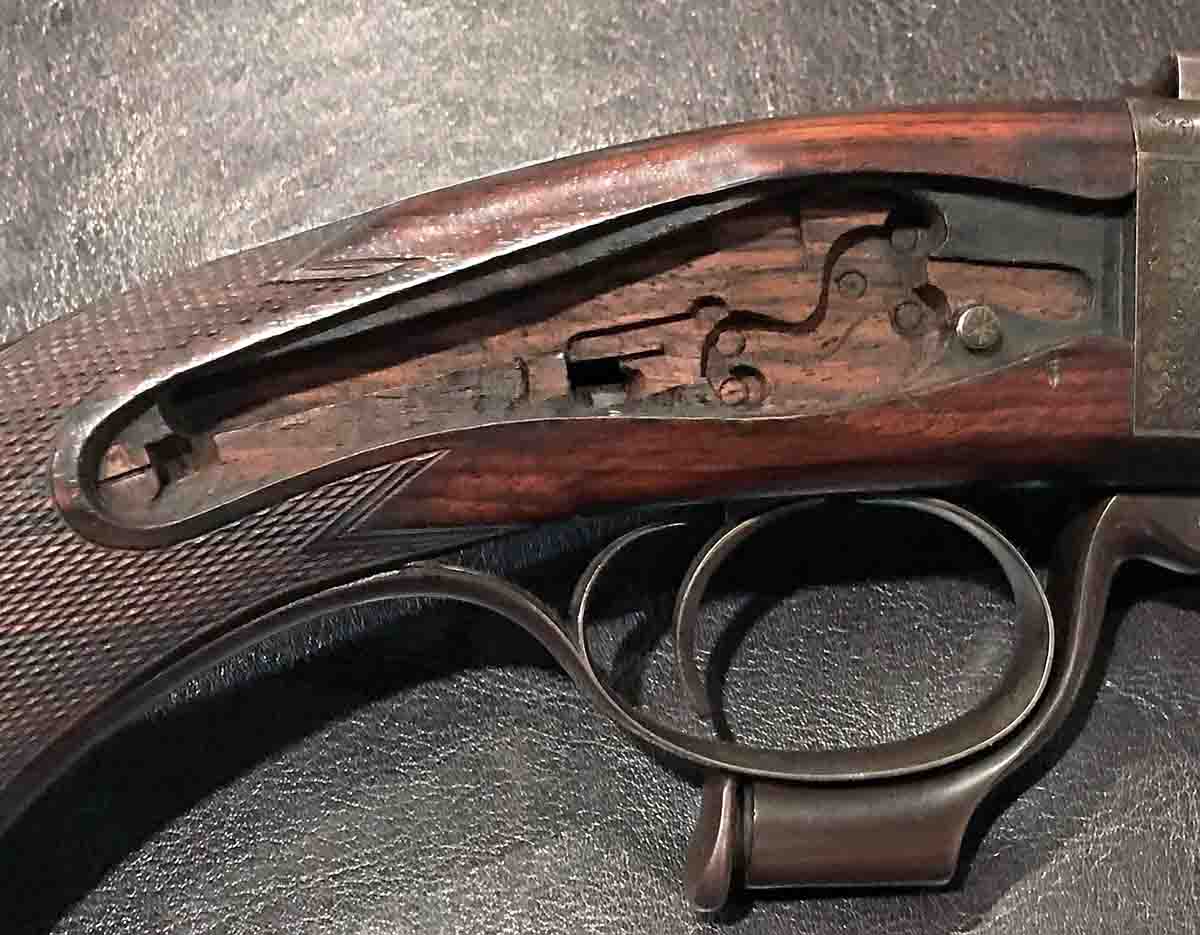
Inletting on Henry rifles can only be described as “flawless.”
In March 1873, Henry wrote to Samuel Allport, “It seemed a very hard matter that anyone who may have spent the best part of their lifetime in communion with and in the improvement of any article, should be unscrupulously deprived of the advantages of their labour, by the dishonesty of any ungrateful cunning rascal, backed up by jealous and disingenuous rivals in business, to suit their own selfish ends.”
Almost immediately after the court case, Farquharson’s patent was reassigned to John Farquharson, gunmakers George Gibbs and William Metford, and Thomas Pitt. Henry clearly believed they were the “jealous and disingenuous rivals.”
Troublesome Business
He took Queen Victoria to court for the prolongation of his barrel patent, and the unawarded War Department prize for “best ammunition” (both successful) and traveled to America to take Peabody to task for breach of patent over their Peabody Martinis (he was unsuccessful).
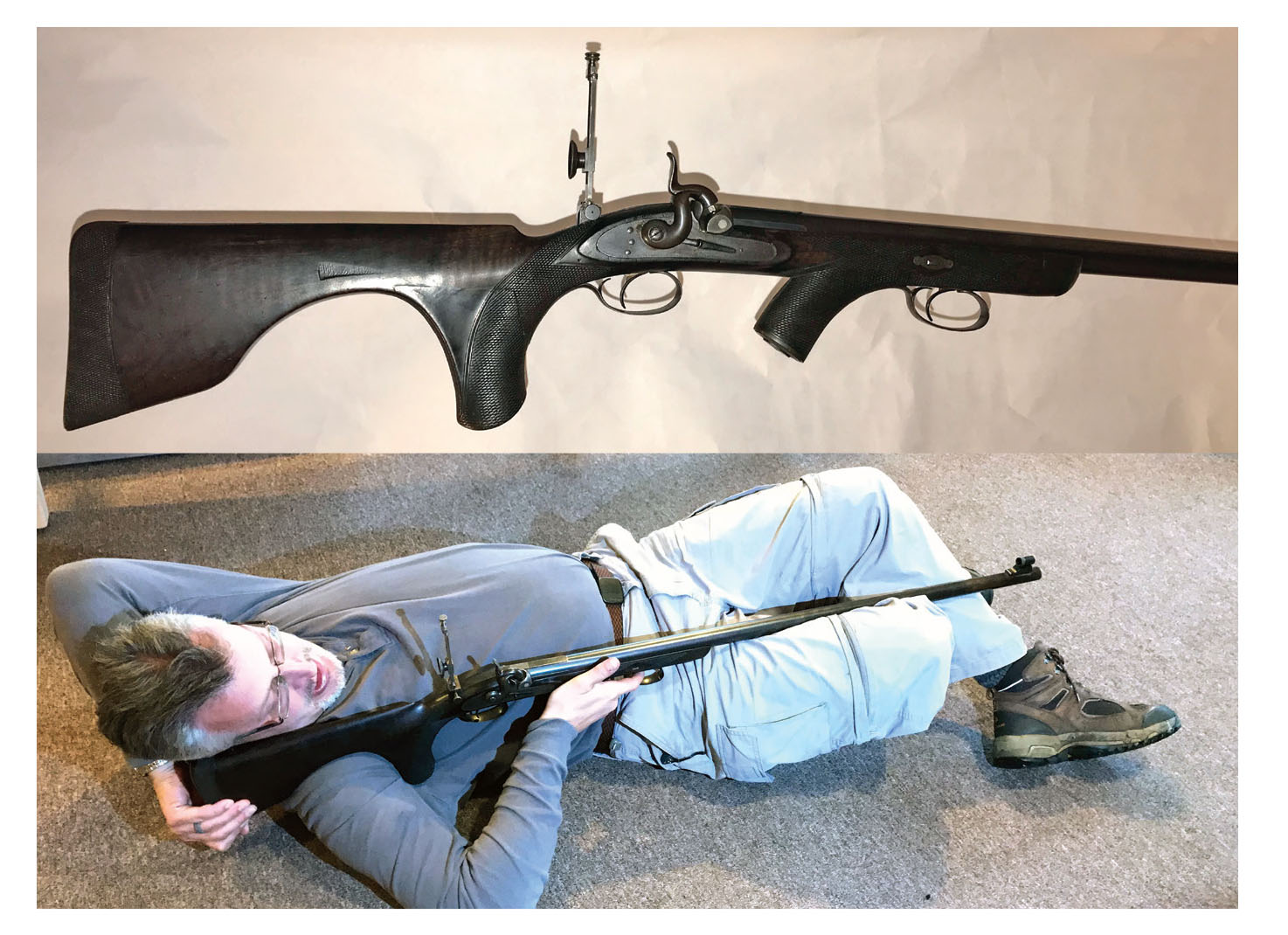
Alexander Henry two-position, long range rifle.
He was swindled out of £3,000 (a huge sum then) by J.D. Wormald, then a prominent solicitor in Edinburgh. Henry wrote to John Moore of Joseph Brazier’s in Wolverhampton in February 1975, “I have been very much engaged in troublesome business which prevented my writing to you sooner.” He also lost a lot of money through investment in the Highland Peat Fuel Company (Company Secretary – J.D. Wormald).
After Henry’s Death
Alexander Henry died in 1894, a world-class gunmaker, very well respected citizen and loving father. He led a full life outside his profession, having been a Justice of the Peace, town councillor, captain of his golf club, elder of his church, a prominent Freemason, and Moderator of the High Constables of Edinburgh, one of the most prestigious roles in his home city.
In his will, Alexander Henry left the business to his surviving sons, Alick and John (John, on condition that he was paid off if he just wasn’t interested). Imagine if Henry knew that they would put the business up for sale within six weeks of his death! It took some time to sell, and from there Alexander Henry Ltd was born, but the business never really recovered without his direction and guardianship.
His son James, even at the age of 12 (Henry’s own age when he started his gunmaking apprenticeship), was showing signs of great interest in his father’s work, when he was tragically killed on the rifle range. It has been said that Alexander Henry was “never the same again.”
I believe that, had it not been for that accident, we could have been talking to this day about Henry and Son, or Henry and Henry, just as we do James Purdey and Sons, or Holland and Holland.
